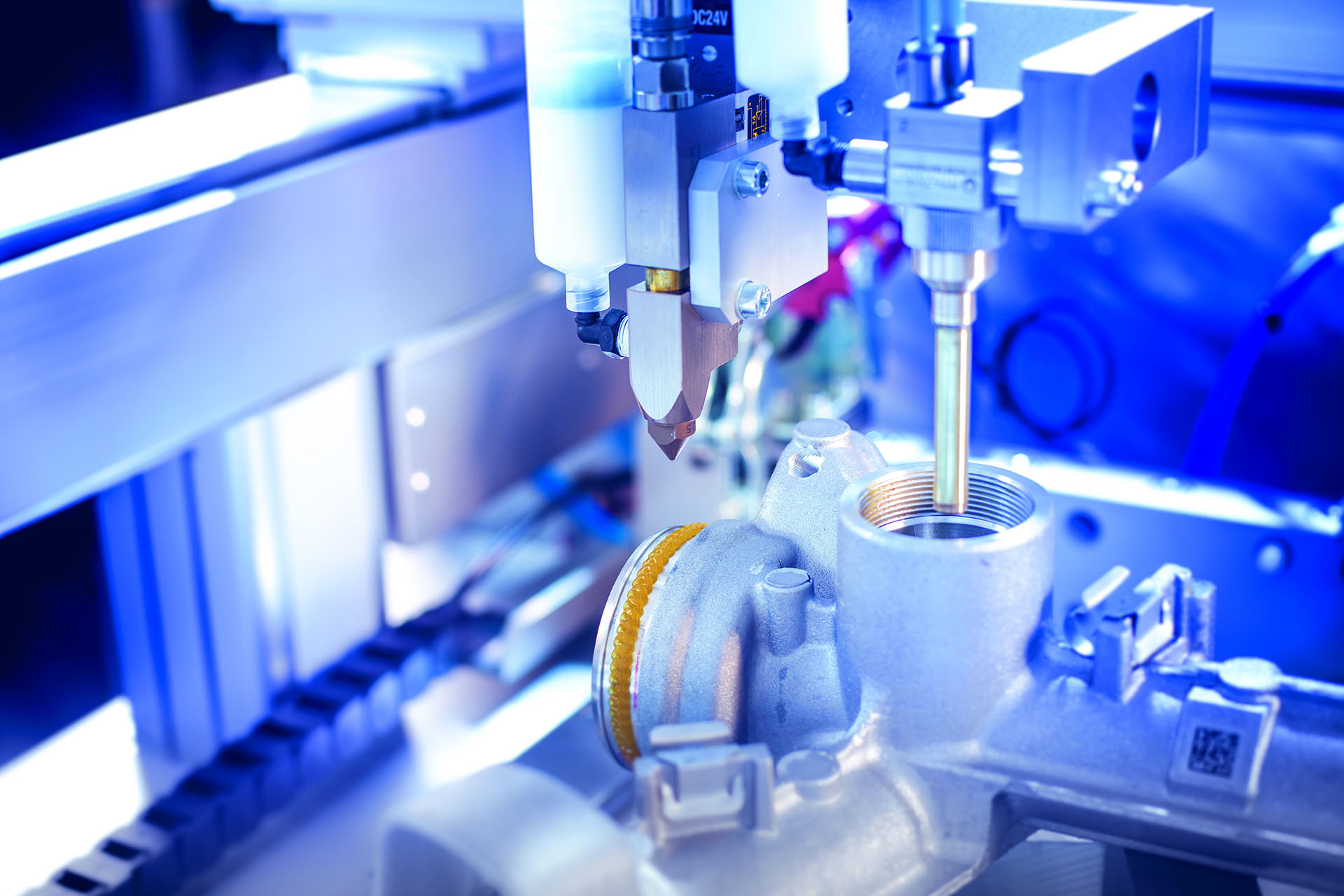The right dose.
Fast, contactless application methods such as jetting and spraying have
enormous benefits. Special dispensing pistols apply minuscule portions of lubricant to a wide range of components, ensuring that they can work without friction. Many media can only be applied appropriately and economically with precise, cutting-edge dispensing technologies – lubricants, oils, release agents, non-friction coatings and paints.
Developing lubricants is a high-tech job. As is its precise application to the lubrication point: it must be dispensed to the right position, in the right quantity. The state of the medium is secondary. It can be liquid or pasty, a fat, a non-friction coating for the automotive interior segment, or a dispersion for coating electric contacts. Whether or not a lubricant is used successfully depends not only on its quality but also on its appropriate and economical application. Besides the automotive and electronics industries, this also applies to technical applications in the food, pharmacy, rubber, chemical and metal processing sectors.
Contact dispensing enables extremely precise reproducibility and clear application, making it a very economical tool.
There are many methods of applying and dispensing the media: in a linear form, by contour lubrication or by way of single-point or multiple-point dispensing. Dispensing methods include volumetric dispensing using air valves, air-supported spraying or the fully contactless techniques of “pulsing” and “jetting”. The latter term is derived from “ink jet”. It refers to a highly reproducible process of dispensing portions of lubricants between ≤ 0.0002 grams and 0.5 grams at high pressure. All these processes are either manual, semi-automatic or fully automatics; some can be integrated into automated systems.
Multiple-point dispensing of lubricants to a car seat rail.
Often, the components and applications that require lubrications are very elaborate. Winding, hidden lubrication points are especially challenging. Such problems can be solved by means of contactless dispensing systems for interior lubrication and oiling purposes or special, angled nozzles that can circumvent obstacles.
The exterior application of lubricants can pose challenges, too: To achieve a completely homogenous result and prevent misting when applying fats, oils or non-stick coatings from spraying valves, you require special valve and nozzle technologies that atomize individually and precisely. But that alone is not enough. Drawing the substances from their containers is important, too. Lubricants and other media must be transported
without air pockets using pumps, fat containers, cartridge systems or pressure tanks. A wide range of heating elements are available to regulate the temperature of the dispensing valves and lubricants and achieve a controlled spray or pulse application. These heating elements are designed specifically for the various valve types. They are controlled through control modules that manage multiple programs.
Process security plays an important role when dispensing lubricants. Pressure monitoring sensors with characteristic pressure curves and flow measurements can verify the application result and ensure precision. Meters and counters using, for example, photoelectric barriers or inductive proximity sensors, are also suitable. Other widely used tools include lipid and color sensors that use light waves to detect the media on the target objects or components.
Write to us if you would like to learn more how to applicate lubricants right.
Error: Contact form not found.
Product insights.

Dr.-Ing. Frederic Foerster
Geschäftsleiter Technik und Vertrieb
Manager Technology and Sales
Other topics
Nothing found.


